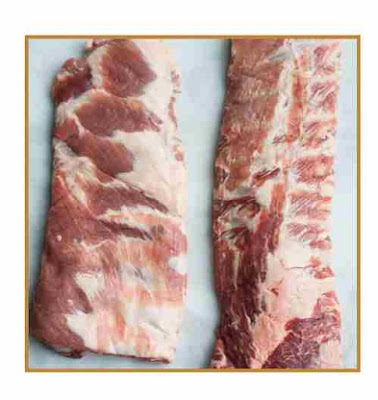Significant
distinctions between spare and baby back ribs Let's look at where they are on
the animal, their size, price, meat and fat composition, pricing disparities,
and how to prepare them, as well as your favorite dishes for each.
Spare
ribs are the kings of pork ribs. They're extremely long, hefty, and meaty. As a
result, they're popular among pitmasters, however, they can be difficult for
some home smokers to control. Because they stretch up the sides of the pig,
they are frequently referred to as "spares" or "side ribs."
Spare
ribs cook up delicious, and there's enough to dig into. They're also rich and
savory, however, the extra bits and pieces make leftovers more difficult to chew
than other cuts.
Spare
ribs protrude from the rib cage's sides and bottom. They start where the baby
backs stop and go all the way down to the breast.
Spares
can be identified by their huge size and uneven form. A rack typically has 11
bones. An untrimmed rack of spare ribs includes a flap of meat known as the
skirt.
Back
ribs, pork loin back ribs, loin ribs, and even Canadian back ribs are all names
for these baby back ribs. They all mean the same thing, but let's face it,
"baby back" simply sounds better.
Baby
backs, like all ribs, were originally abandoned since no one wanted them and
they were difficult to pack. It required the miracle of refrigeration to make
transporting ribs a viable option, and even then, they took some time to gain
momentum.
Baby back
ribs are derived from the rib cage nearest to the spine, as the name indicates.
They do not, however, come from baby pigs, as the name implies. Baby back ribs
are distinguished by their tiny bones and delicate bend. A rack of ribs should
provide roughly 14 ribs.

No comments:
Post a Comment